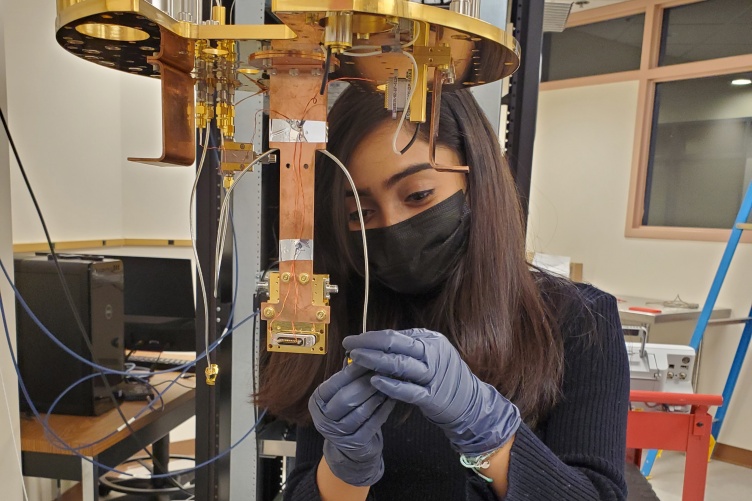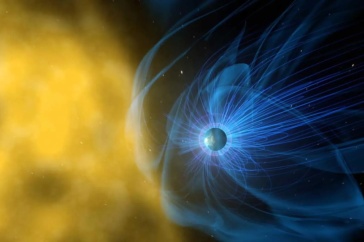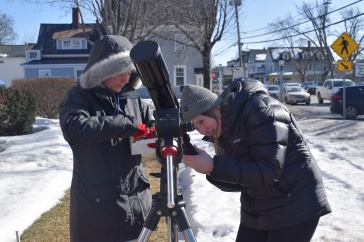
Adrika Dasgupta, a Ph.D. student in physics, installs a transition-edge sensor (TES) in a dilution refrigerator located in Morse Hall.
A TES is a type of detector that scientists hope to use in mapping gamma ray emissions from supernovas in space and to help better understand how elements are formed during these stellar explosions. TES detectors work well in lab settings, but they will need some improvements to meet the requirements of astrophysics, says Fabian Kislat, UNH assistant professor of physics who advises Dasgupta on her research in the Space Science Center and the College of Engineering and Physical Sciences.
“With some improvements, TES detectors will allow us to measure the energy of a gamma ray extremely precisely, more than 10-times better than with the semiconductor detectors used by other experiments,” Kislat explains.
These TES detectors need to be extremely cold — about 70 milli-Kelvin, or 0.07 degrees Celsius above absolute zero; a dilution refrigerator is capable of reaching 7mK. This frigid environment mimics the cryostat chamber in which the TES detectors will be housed during a future trip into space on a telescope. In the lab, this refrigerator will allow Dasgupta to test and compare various detector designs to find the best one for flight and to guide the future development of the devices.
Dasgupta and Kislat are collaborating with the NIST in Boulder, Colorado, on this project.
-
Written By:
Rebecca Irelan | Institute for the Study of Earth, Oceans, and Space | rebecca.irelan@unh.edu | 603-862-0990

















































